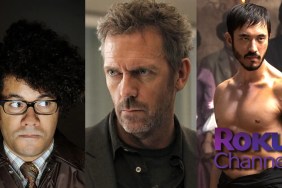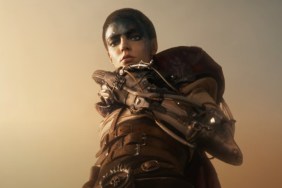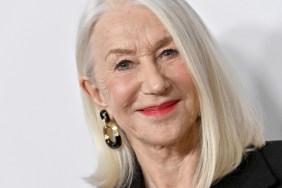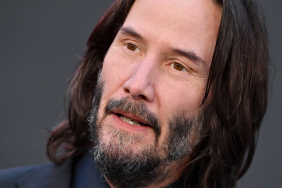When it comes to science fiction movies, there’s few recent directors that can match the overall quality of storytelling as Alex Proyas. Following his breakout Hollywood debut The Crow, Proyas impressed genre fans with Dark City, a groundbreaking movie co-written by David Goyer that many felt influenced “The Matrix” series, and six years later, Proyas was at the helm of a big budget version of Isaac Asimov’s I, Robot starring Will Smith, which was a summer blockbuster hit.
Proyas’ first movie since then is the thriller Knowing, which opens next month, starring Nicolas Cage as a professor who discovers that a series of numbers on a sheet of paper found within a time capsule foretells every known disaster that has taken place in the past 50 years, as well as those yet to come.
This past weekend, Summit Entertainment premiered two extended clips from the movie at the New York Comic-Con. While Proyas was too busy finishing up pre-production to make the trip, he did tape introductions for the footage shown, two huge set pieces from early in the film, a plane crash and a hugely destructive subway accident, both fairly long sequences.
After playing the trailer, the first clip shown takes place as Cage’s character is driving through the rain on the way to the elementary school where the time capsule was found. He’s stuck in traffic, so he calls ahead on his cell phone, but as he’s sitting there, he looks down at the GPS on his dashboard and sees familiar numbers, which he realizes matches up with some of the numbers on the sheet of paper he’s been studying. He gets out of his SUV to find out why traffic has been stopped, walking through the rain to the policemen holding things up, but before he can find anything out, the policeman gives a frightened look and we see a giant 747 heading downwards towards them, plowing through some power lines overhead then crashing in a field on the other side of the highway. Cage starts running towards the wreckage as people are running around on fire, screaming, and he tries to help survivors, putting one guy who is burning on the ground out and pulling another man out of the fuselage. It’s an incredibly intense scene with people dying and parts of the plane exploding all around Cage, and it’s so shocking you may not even realize that from the moment the plane crashes, it’s all done in one take with absolutely no edits (something which Proyas talks about in our exclusive interview below.)
The second sequence takes place as Cage’s character starts trying to decipher the numbers and prevent any further disasters, and he traces the latitude and longitude of the next series of numbers on the sheet to a city scene just outside a subway station. He quickly realizes that the numbers are pointing to the station itself, and as he enters the crowded subway platform, he anxiously looks around for anything that could point to something bad happening. He spots someone acting suspiciously, who immediately starts running when he realizes he has gotten Cage’s attention. Cage starts following him across the crowded platform and then onto one of the trains, but the transit police see this and start following Cage onto the subway car as it pulls out of the station. The chase continues until the man gets to the very front of the train and has nowhere else to go. Cage is freaking out, telling everyone to get off the train, but it turns out that this suspected terrorist is just selling pirate DVDs, as they drop out of his coat. Before either Cage or the police can do anything, another subway train down the tracks runs into some problems and goes off the rails. Seeing the oncoming train through the front window, people in the car start freaking out and running back as the runaway train heads towards their car. It starts plowing through the people on the platform and the pillars holding the place up, destroying everything in its path before hitting the train. (Not sure how Cage or the others get off of it.) In one particularly disturbing shot, we see the carnage through the viewpoint of the out-of-control train as people smash into the glass leaving a bloody splotch on it. It’s a really impressive set piece which shows a lot of large scale destruction that’s even more impressive than the similar trail derailments in movies like Die Hard: With a Vengeance or Final Destination 3. Both of the scenes shown were very intense and somewhat graphic that it might surprise some that the movie’s already received a PG-13 rating. (One little gaff that most New Yorkers will catch right away: This sequence takes place at a subway station labeled “Lafayette Street” on the “4” line, which actually runs down a short stretch of Lafayette Street, although there’s absolutely no stop with that name on the line.)
Before the convention a couple of weeks back, ComingSoon.net had a chance to get on the phone with Proyas from Australia during a short break in his work schedule, and we were able to find out a bit more about this fascinating new film of his.

ComingSoon.net: How’s everything going on finishing this movie up?
Alex Proyas: It’s going very well, thank you. I mean it’s always a mad scramble to the finish at this stage. It’s always the same story, but I’m very, very pleased with the way it’s coming along.
CS: I saw the teaser back at Comic-Con last year and it looked pretty finished, though I guess there’s a lot of stuff going on post-production wise as far as CG. Is that the case?
Proyas: Yeah, well there was actually nothing finished when we showed that teaser at Comic-Con. I think we just wrapped in fact, we just finished shooting, so there was not a lot to really show people, but we wanted everyone to have a little taste of what they could expect. Obviously, things have progressed quite a lot since then.
CS: It’s been a while since “I, Robot.” What have you been up to? Did you start this a while ago?
Proyas: Yeah, I mean most of my projects take a while to develop and “Knowing” has been no different. We’ve spent a long time trying to get it all as good as we can. I’m a real believer in getting the script really polished before we start shooting, so it’s just the way things go for me I suppose. I’d rather make fewer films and make sure they’re as good as I can make them.
CS: Where did this project come from? Was this based on something else?
Proyas: The genesis of it was a spec script by a chap called Ryne Pearson which has been floating around for a while, and really, we’ve developed it quite a lot. We used that spec script as a sort of a stepping off point really. Ryne came up with the original notion of the time capsule that has certain predictions in it that have come true, and there’s more to come. I think that’s where the genesis of that idea came from and then we’ve taken it from there basically.
CS: Is there any real science you were able to research to be able to develop the idea?
Proyas: I like science fiction as a genre, and to me, I like basing my films in the real world in terms of being scientifically plausible. It really is very much the case in this story. I really can’t say a lot more, because it’s so tied in with the plot and certain reveals in the plot. It’s not a pure fantasy. I really don’t know how to make a pure fantasy. I’m very much driven by trying to base things in reality as much as possible, and in this film even moreso than usual. For me, it’s really trying to ground the stories I’m telling in some sort of feeling that they could actually be happening. I think that’s when they start to feel potent to me.
CS: Just from the trailer I’ve seen, compared to “Dark City” and “I, Robot,” this seems to be more in our world and our time…
Proyas: Yeah, I don’t often make movies in contemporary times. This one is very much based in today and all that goes with that. When you’re working on science fiction genre material, there’s so many rules that need to be created. You sort of are basically writing the rulebook from the ground up. People who make movies in the real world don’t often have to worry about that; they just have to worry about the internal logic of their story, but in this particular genre, I have to spend a lot of time creating the backstory rules and how everything functions within the logic and the science of the story. Which is great fun, though it’s usually quite an intellectual challenge I have to say on every project, because I feel like even if those rules aren’t over, even if they’re not on screen or characters don’t verbalize them, if they’re not there, the audience feels them missing. I think it’s very important in genre pieces that they hold water, whether they’re reality-based genre like “Knowing” or a more futuristic-based genre like something like “I, Robot.” I think there’s a lot of effort put in behind the scenes to make it all work and function properly.
CS: Was that the most challenging aspect of developing the script and making the movie or were there other things when you started getting into this that proved to be more challenging?
Proyas: Every film has its own challenges. I think this had its fair share, and I think my desire to make things plausible, both conceptually and visually certainly was challenging. There’s one particular sequence, which is a plane crash that’s been seen in some of the trailers, which we’ve only shown very small portions of, but in the finished film, it’s a ten minute long take that basically, when Nic Cage sees this plane coming then crash land in a field, then he runs and tries to rescue as many survivors as possible. It’s all one continuous take that he’s sort of running as the fuselage is blowing up and all sorts of things. We shot it as one continuous shot and that was certainly a challenge. The reason I wanted to do that was to make it as viscerally believable as you can. I think people are so desensitized now by trickery in films and sometimes, newsreel footage has more potency because it’s shown in a more objective way. I feel like films are being influenced by that sort of style of capturing those sorts of events now.

CS: When we see the plane crash in the teaser, it’s kind of shocking. Based on the premise, you might expect this to be a smaller movie than “I, Robot.” Even so, there seems to be a lot going on in this movie on a more global scale. Does this movie eventually become a big movie?
Proyas: It is. I mean, it’s both big and small at the same time, if that makes any sense to you. Its essential story, the central core narrative of the movie is quite intimate. It’s really about Nic’s character and the relationship with his son, and that’s the core narrative and emotional spine of the film, but they move through an escalating sequence of events that get more and more large-scale, let’s say, through the movie. The movie starts off on one strand and then it opens out constantly every reel, it goes up a notch or two. It’s been very interesting to make a film like that. I’m very proud of the finished film because I think that core story really pulls you through this increasing spectacle. So it’s kind of both intimate and epic at the same time, which I’m very pleased I managed to make that work.
CS: Nic has done so many kinds of movies, and he’s always been a genre and science fiction fan, so what made you feel that he’d be right to play this role that made it different from other characters he’s played?
Proyas: Well, I’ve been a big fan of Nic’s for a long time and we’ve been wanting to work together for a while now. Yes, he does understand… he’s a comic book fan and a fantasy film fan, and he understands the genre, and he’s done a number of those kinds of films but really, our working relationship was just two guys telling a story, and for us, when we’re inside the movie, inside the story, we’re really just trying to craft a believable character from day-to-day. You know, Nic is an incredibly versatile actor. He has so many layers and so many shades. I mean, he’s a real actor. He’s not just a movie star. He actually embraces his characters and he runs a mile with them, and that’s really important. That’s always very exciting for a director like myself, to work with someone who is truly courageous about exploring a character in the way that Nic does. I think he’s created this believable guy; he’s not a superhero. He has his weaknesses and his dark side and his foibles and that’s what makes him such a rich, complex and interesting character.
CS: I’m going to ask you to be a little introspective here by turning that question on yourself. A lot of directors come from the world of commercials and music videos, and the movies you’ve made have been very different from each other. I wondered what you feel your sensibilities are as a director that make your movies different from other filmmakers?
Proyas: God, that’s a hard question to answer. Look, I respond to stories that are different and unique, ones that I haven’t heard told before, and stories that take you on an unexpected journey that don’t follow the pattern. They break the mold, other than following what’s come before. That’s when I get excited about a story, and I look long and hard for those stories, and occasionally, I find them – probably not as often as I would like and maybe that’s why I don’t make so many movies. In the case of “Knowing,” I think it’s a very unique story. I’ve never seen a movie like this. I don’t even quite know what genre to call it in some ways, because it does take you on such an unusual and enveloping journey that it starts off one path and it takes you on several hairpin turns. That’s what excites me about that story, and on some level, I’ve always looked for stuff like that. Then within that, I ask myself, “Can we affect people? Can we scare people and move people and make them laugh and entertain everyone on this journey?” I guess that’s my formula, if there is such a thing. But it’s just I want to be surprised, and I feel like audiences want to be surprised, too. I guess I look for something that’s going to keep me–both as an audience and viewer as a film–entertained in an unexpected fan, but also as a director that I find something that challenges me in a different way on a level that I haven’t been challenged before.
CS: With that in mind, do you look at “Knowing” as being science fiction? It doesn’t have the most obvious science fiction elements, at least from what we saw?
Proyas: It’s definitely science fiction without any question. It’s not supernatural, it’s very much of that genre.
CS: I know you’ve been working very hard on finishing this up, but have you been able to make any progress on any of the other scripts you’ve been developing, like “Dracula Year Zero” or the Heinlein movie?
Proyas: Yeah, I’m working on a bunch of different things and the two projects I’m excited about are an adaptation of John Christopher’s Tripod stories that I’ve co-written with Stuart Hazeldine, who was one of our writers on “Knowing,” and the Dracula project, both which are very exciting projects, but at this stage, we’re still in the budgeting process for both, so I can’t really tell you much more than that.
CS: You talked before about finding different and unique things, but both of those are based on existing properties. Before we wrap up, I wanted to ask about doing adaptations like those but putting your own spin on them.
Proyas: Well, I’m not a fan of remakes or sequels. I haven’t done any and I’m not really that excited about them usually. In the case of Dracula, the reason I got so excited about it is that I read a particular script that completely puts the whole legend on its head in every conceivable way and it comes out with something that’s both an ode to Bram Stoker’s original “Dracula” in that it’s kind of a prequel to that and also redefines the character to such an extent that I found it quite exciting. So that is very much a reinvention of that character and that’s why I got excited about it.
Knowing opens on March 20. Enter the Knowing Digital Time Capsule Contest to have your own chance to ask questions of Proyas in an exclusive online chat.









